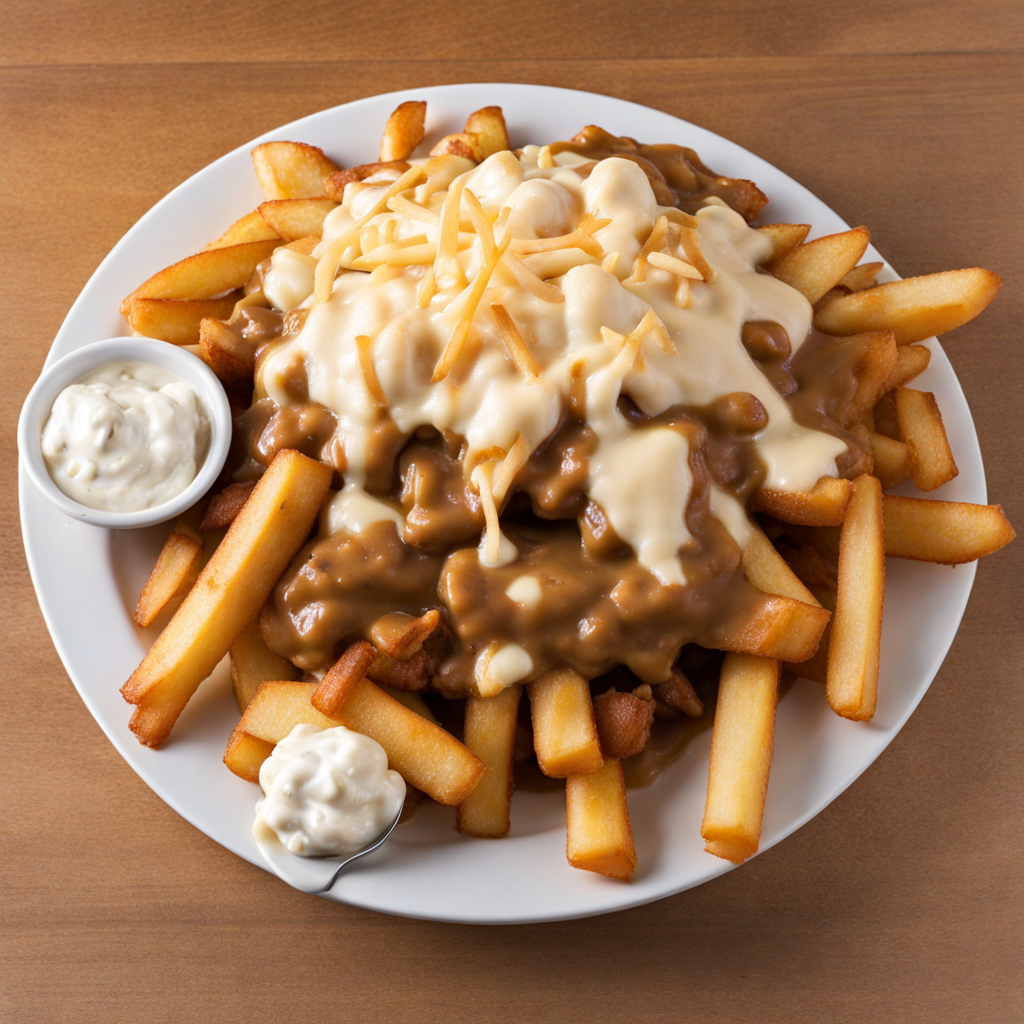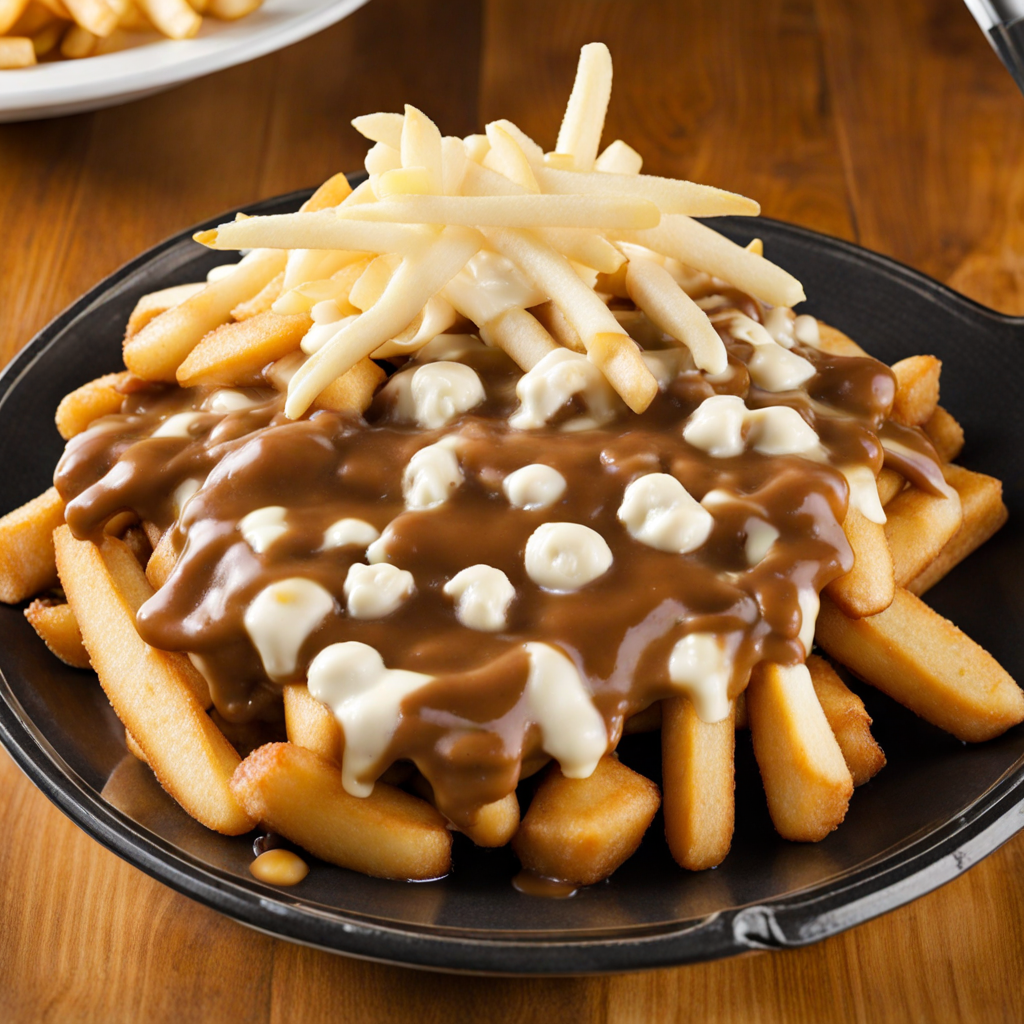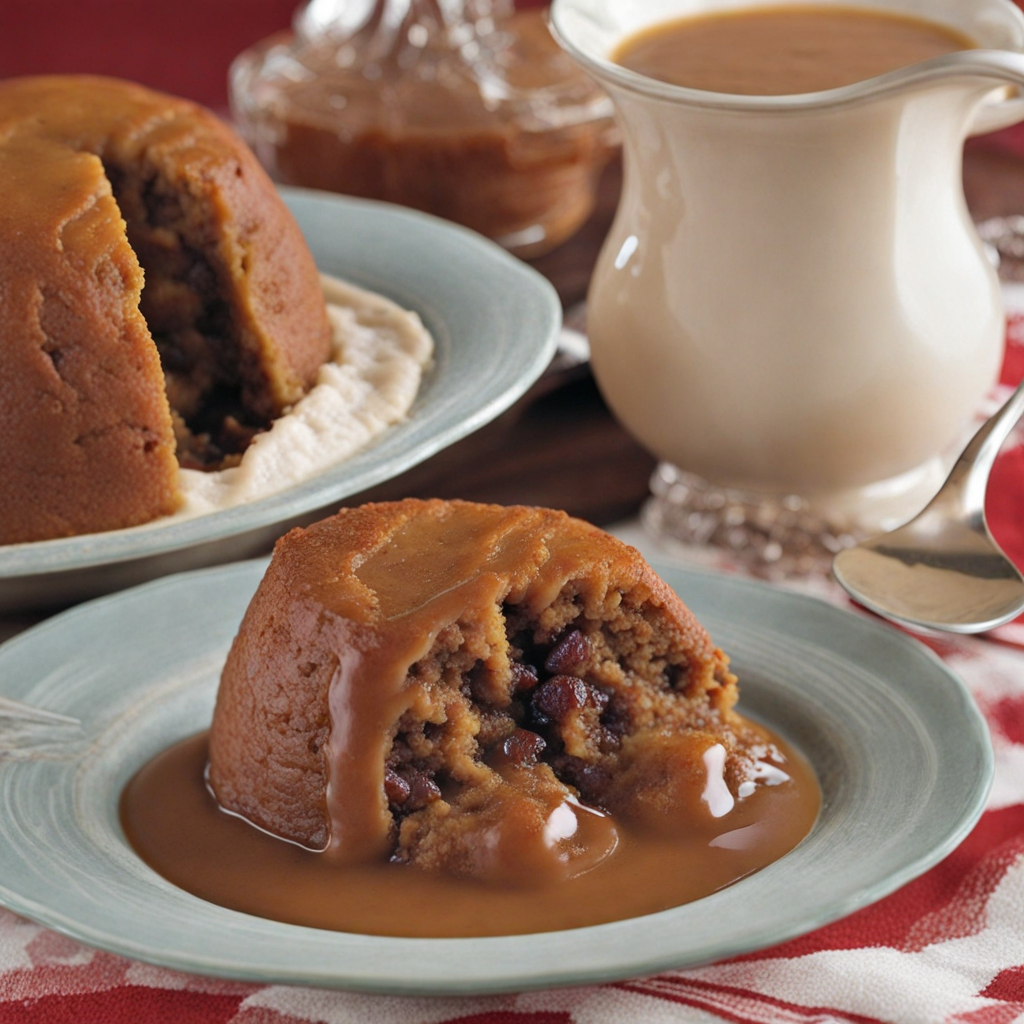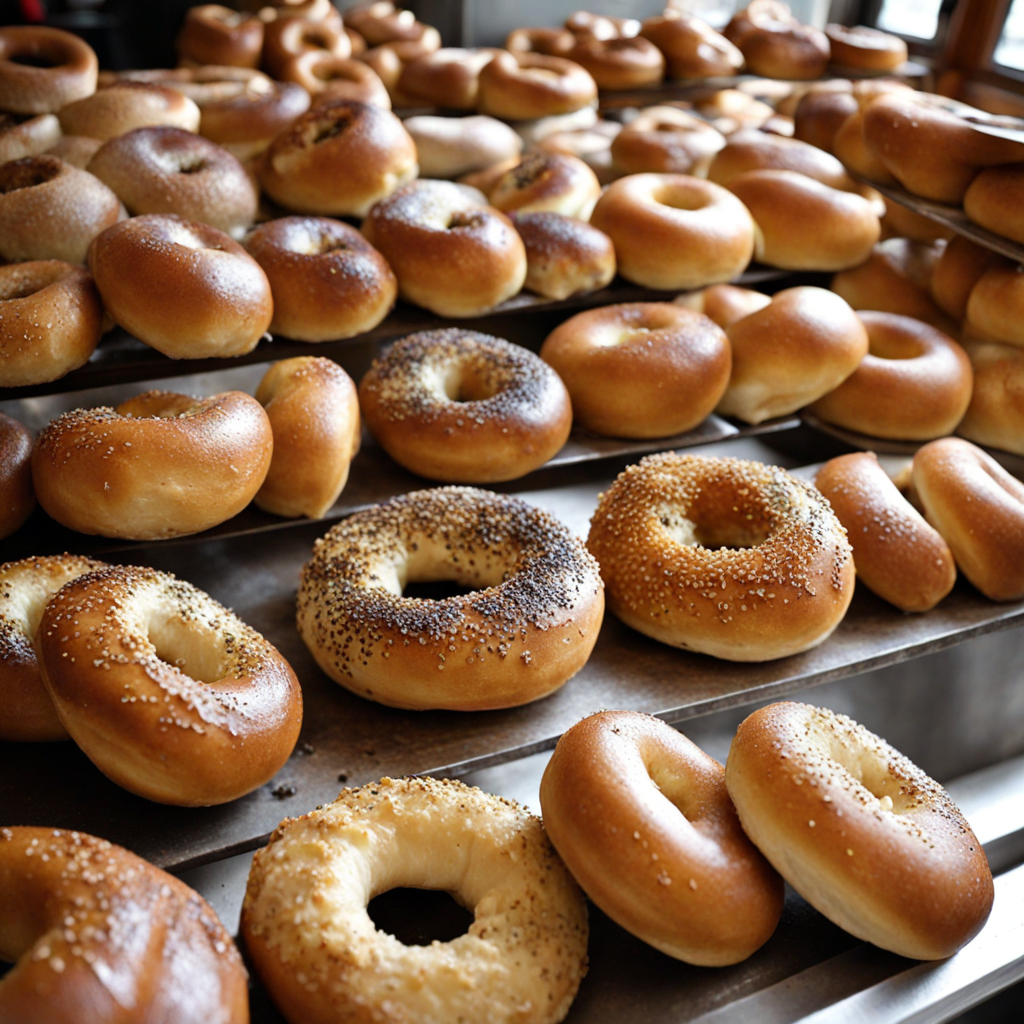Poutine
Poutine is a delightful Canadian dish that beautifully combines comfort and indulgence. At its core, this dish consists of French fries topped with a generous helping of cheese curds, which are small, fresh cheese pieces that have a slightly rubbery texture. The fries are typically crispy on the outside and fluffy on the inside, providing the perfect base for the toppings. The dish is often served hot, allowing the cheese curds to soften and melt slightly when they come into contact with the warm fries, creating a delectable mix of textures and flavors. What truly sets poutine apart is the rich, savory gravy that is poured over the fries and cheese curds. This gravy can vary in flavor and thickness, with some versions being made from beef stock while others might incorporate chicken or vegetable broth. The gravy adds a luscious, comforting element to the dish, enhancing the overall experience and ensuring that each bite is packed with flavor. The combination of salty fries, creamy cheese, and savory gravy creates a mouthwatering medley that is both satisfying and addictive. Poutine has evolved over the years, and while the classic version remains a favorite, many variations have emerged. Some people indulge in gourmet versions that feature additional toppings like pulled pork, sautéed mushrooms, or even truffle oil, elevating the humble dish into a culinary experience. Whether enjoyed as a late-night snack, a side dish, or a main course, poutine captures the essence of Canadian comfort food, inviting anyone willing to explore its rich flavors and delightful textures.
How It Became This Dish
The History of Poutine: A Delicious Canadian Legacy Poutine, a dish consisting of french fries topped with cheese curds and gravy, has become synonymous with Canadian cuisine, particularly in Quebec. Its origins, while hotly debated, reflect the rich tapestry of Canadian culture, showcasing the interplay of French and English influences, regional ingredients, and evolving culinary practices. #### Origins: A Delicious Debate The exact origins of poutine are cloaked in culinary folklore, with multiple towns in Quebec claiming to be its birthplace. One of the most popular stories attributes the dish to La P’tite Vache (The Little Cow) diner in Warwick, Quebec, around the late 1950s. According to this account, a patron requested that cheese curds be added to his fries and gravy, leading to the creation of the dish we know today. Another claim comes from the town of Saint-Jean-sur-Richelieu, where it is said that a local vendor served the combination in the 1950s to hungry customers. Another contender for the title of "first poutine" is the diner called Le Roy Jucep, located in Drummondville, Quebec. The owner, Fernand Lachance, purportedly invented the dish by mixing fries, gravy, and cheese curds in a paper bag, allowing for a portable meal for busy truck drivers. Regardless of its precise origins, what is clear is that poutine emerged during a time of post-war prosperity in Canada, when convenience foods and hearty meals were in high demand. #### Cultural Significance: More Than Just a Meal Poutine transcends its status as a mere comfort food; it has become a cultural icon of Quebec and, by extension, Canada. The dish embodies the heartiness of Quebecois cuisine, which often emphasizes the use of local ingredients and traditional cooking methods. Cheese curds, a staple in Quebec, are made from fresh milk and are essential to the dish, providing both texture and flavor. The gravy, typically made from a meat-based stock, is poured generously over the fries and cheese curds, creating a satisfying meal that warms both body and soul. In Quebec, poutine is more than a dish; it is a part of the province's identity. It has been celebrated in festivals, featured in songs, and has even inspired a dedicated day—National Poutine Day, celebrated on April 11. The dish has become a symbol of the province's culinary heritage, often enjoyed at roadside diners, fast-food joints, and upscale restaurants alike. It represents a sense of community, as Quebecois often share poutine at gatherings, emphasizing the importance of food in social bonding. #### The Evolution of Poutine: From Local Delicacy to Global Phenomenon As poutine gained popularity in Quebec during the 1980s and 1990s, it began to spread beyond provincial borders. Restaurants across Canada started to feature the dish on their menus, introducing variations that incorporated local flavors and ingredients. For instance, some establishments began offering toppings like pulled pork, foie gras, or even vegetarian options, showcasing the versatility of the dish. The 2000s saw a surge in poutine's popularity, not just in Canada but internationally. Canadian expatriates and tourists brought poutine to cities across the globe, with food trucks and pop-up restaurants serving the dish in major urban centers. The rise of social media further propelled poutine into the culinary spotlight, with food bloggers and influencers showcasing their own takes on the classic dish. This exposure led to a renaissance of poutine, with chefs experimenting and elevating it from its humble diner roots to gourmet status. In 2015, the Canadian government even recognized poutine as a cultural treasure, promoting it as part of Canada’s culinary heritage. This recognition not only solidified its place in Canadian culture but also encouraged culinary tourism, drawing food enthusiasts to Quebec to experience authentic poutine in its birthplace. #### Regional Variations: Poutine Takes on New Forms As poutine spread, it adapted to various regional palettes and preferences. The classic version remains immensely popular, but several variations have emerged, reflecting local tastes and ingredients. For instance, in the Atlantic provinces of Canada, seafood poutine has become popular, incorporating elements like lobster or scallops. In British Columbia, you might find a poutine made with locally sourced mushrooms or topped with smoked salmon, showcasing the region's rich seafood offerings. Furthermore, the vegetarian and vegan movements have prompted many restaurants to create meat-free versions of poutine. These variations often use mushroom-based gravies or plant-based cheese alternatives, ensuring that poutine remains accessible to a broader audience. #### Poutine in Popular Culture Poutine's rise to fame has also been facilitated by its appearance in popular culture. Television shows, movies, and even video games have featured the dish, further embedding it into the collective consciousness of Canadians and beyond. In Quebec, poutine has inspired numerous culinary competitions and festivals, celebrating the dish and its myriad interpretations. Moreover, the dish has become a beloved late-night snack, often enjoyed after a night out on the town. Its comforting nature and hearty ingredients make it a popular choice for those looking to indulge, contributing to its status as a cultural staple. #### Conclusion: A Dish with Layers Poutine is more than just a dish; it is a celebration of Canadian culture, identity, and innovation. Its humble beginnings in the diners of Quebec have evolved into a global phenomenon, showcasing the adaptability of traditional foods. As poutine continues to evolve, it remains a testament to the power of food to bring people together, celebrate heritage, and inspire creativity. Whether enjoyed in its classic form or a modern twist, poutine will undoubtedly continue to hold a special place in the hearts and stomachs of Canadians for generations to come.
You may like
Discover local flavors from Canada







